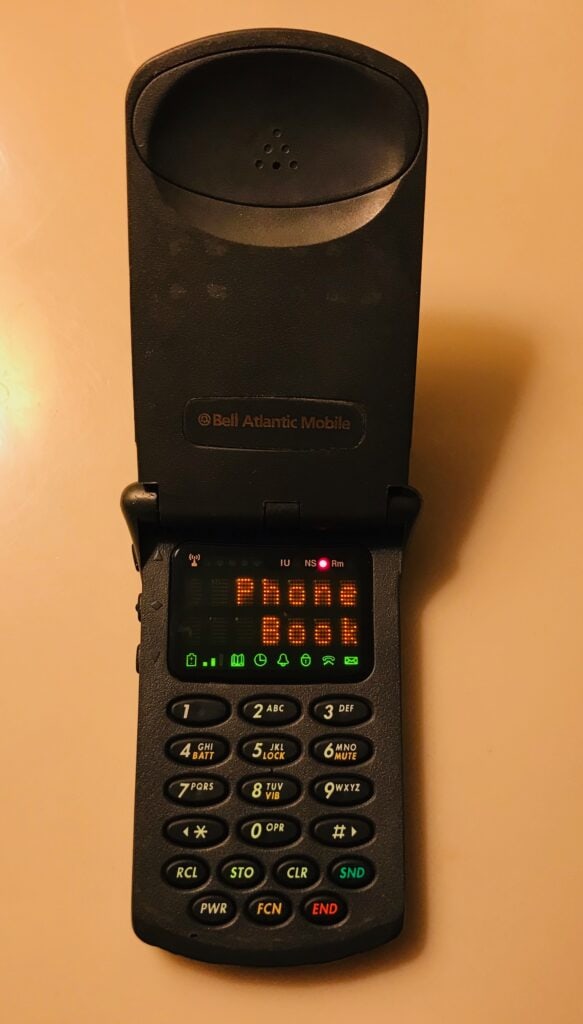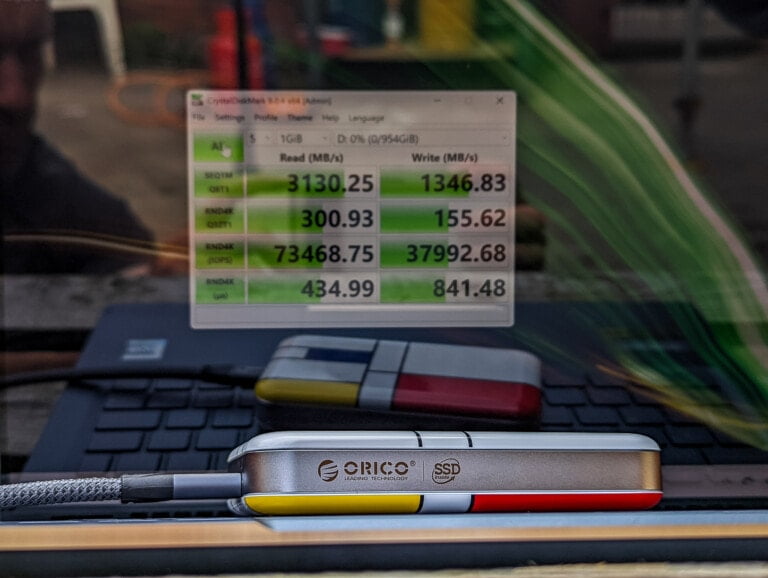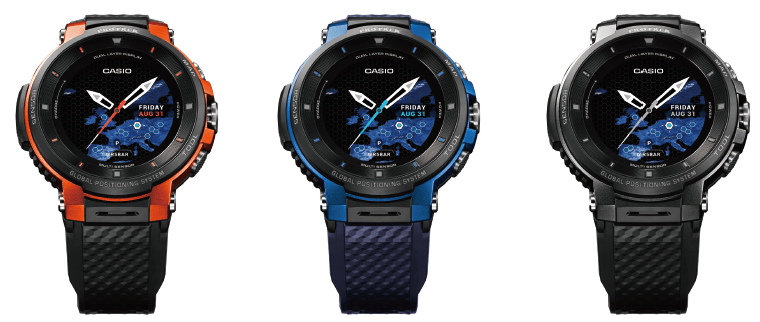Any links to online stores should be assumed to be affiliates. The company or PR agency provides all or most review samples. They have no control over my content, and I provide my honest opinion.
The mobile phone has grown to become one of the most essential items in our life.
We take them everywhere; many of us rarely use the phone functions but use them for messages, contactless payments, photography, GPS and online shopping.
They are a marvel of modern technology and almost feel like something from a piece of sci-fi when you reminisce about what technology was like in the recent past.
As much as I love mobile phone technology, writing about and reviewing the latest devices that come out they have become quite boring. The technology has plateaued, and each new phone that gets launched is an incremental improvement from the last model.
I miss the times when each time I upgraded my phone, I would have some new and wonderful technology to try out. I remember someone getting the Nokia 8110, and later me getting the Nokia 3210, which I think was my first phone. I had the Samsung SGH-V2000, which was the first camera phone, and I think my first phone with a colour screen. I remember when WiFi first appeared on phones and when one of my friends first got a Symbian smartphone, which I think was the Nokia 7650.
I’d say it was the 2000s when mobile phones really started to become exciting, and most of the phones above are from that era, but it is important to look back at how phones quickly progressed through the 90s.
Mobile phones started to appear on the market in the 1980s with analogue phones, but it wasn’t until the 1990s that the technology really gained traction and became mainstream. Digital phones started launching early ’90s.
With Black Friday approaching, if you want a new phone then Back Market is a great site for black friday mobile phone deals.
Orbitel TPU 900 (1991)

This phone may not be that well known, and it is barely a mobile phone due to its design, but it is a notable device because it was the world’s first GSM phone and the first phone to receive a text message
Nokia 1011 (1992)

The Nokia 1011 is not as iconic as the other Nokia phones on this list, but it was the first GSM from the brand and the candy bar design.
Nokia 2110 & 2110i (1994 and 1995)

The Nokia 2110 was launched in 1994 and quickly became a must-have for business users thanks to its smaller portable design. It was the first Nokia phone with the famous Nokia tune ringtone.
Other cutting-edge features included being able to send and receive SMS messages; and list ten dialled calls, ten received calls and ten missed calls.
Motorola StarTAC (1996)

Likely inspired by the Star Trek Communicator, the Motorola StarTAC and its subsequent models were incredibly popular. The StarTAC was the first ever clamshell flip phone and the smallest phone available on the market at the time, weighing just 88g (compared to 236g for the Nokia 2110).
It was one of the first phones to introduce vibration as an alternative notification method and there was also an optional lithium-ion battery at a time when most phones were restricted to lower-capacity NiMH batteries.
The Motorola StarTAC is reported to have sold 60 million units making it the second mode popular phone sold in the 90s.
Nokia 8110 (1996)

Launching three years before The Matrix, the Nokia 8110 is affectionately called the Matrix phone or, due to its shape, the banana phone. It was another phone that redefined phone design, being smaller and lighter than previous Nokia phones. It was also the first Nokia device with a clear monochrome graphic LCD display.
The original Nokia 8110 lacked a spring sliding mechanism, as we saw in the Matrix, but it proved to be such a popular idea that Nokia implemented it into the Nokia 7110.
Nokia 6110 (1997)

The Nokia 6110 is possibly the first phone I really remember people of my age starting to get. There was an incredible amount of excitement that this had a built-in game of Snake, and I fondly remember playing two-player Snake using the infra-red port as the connection.
The 6110 improved on the Nokia 2110 with a smaller size and improved talk time, and it was the first phone to use an ARM processor.
Siemens S10 (1997) & SL10 (1998)


The Siemens S10 was the first phone to use a colour screen, using red, green, blue and white. It was able to display up to six lines of text. Sadly, the 97 x 54-pixel colour screen wasn’t all that good, and the phone suffered from screen visibility issues, and the phone struggled to gain much traction. Siemens then had more success with the SL10, which was a slider phone that competed with the Nokia 8110.
Nokia 9110 Communicator (1998)

The Nokia 9110 Communicator was an advanced business-focused device that opened up to reveal a full QWERTY keyboard. It could handle email, fax, and basic web browsing, and included business applications like a word processor and spreadsheet viewer.
Philips Spark (1999)

The Philips Spark was notable for its unique dual-band capability and voice control features. It was one of the first phones to offer voice dialling and voice commands, making it ahead of its time in terms of user interface innovation.
Ericsson T28 (1999)

The Ericsson T28 was revolutionary for its time, being one of the smallest and lightest phones available. It was the first phone to use a lithium polymer battery and featured an innovative active flip design. The phone included features like voice dialling and had a distinctive antenna design that became iconic.
Nokia 3210 (1999)

The Nokia 3210 is reported as being the 7th best-selling phone of all time, with 161 million units sold. Interestingly, the top 10 sold phones are all dominated by Nokia and Apple, with Nokia occupying the top two spots.
This phone launched at a reasonably consumer-friendly price point of £150 and quickly became popular with teenagers. By the end of 2000, you could pick one up for around £70.
Back in 1999, it is believed that just 35% of under 18s had a mobile phone, and the 3210 helped drive up these numbers.
In addition to the reasonable price, the popularity was driven by the popular Snake game that had launched on the Nokia 6110 and the introduction of Xpress-on interchangeable covers. These allowed you to customise the look of your phone.
Nokia 8210 (1999)

This phone launched as a premium device, but it quickly became affordable and enjoyed commercial success for many years, staying popular well into the 2010s. It was announced in October, 7 months after the 3210, during Paris Fashion Week.
The Nokia 8210 helped drive phones to become more fashionable. It was small and light, and it was possible to switch out the phone cover with the Xpress-on interchangeable covers (first introduced with the Nokia 5110).
Conclusion
I am a little too young to appreciate all of the phones on this list, but like many kids from the 80s, it was the Nokia 3210 that really piqued my interest in mobile phone technology. However, it was the 2000s when I believe phones became truly exciting.
I am James, a UK-based tech enthusiast and the Editor and Owner of Mighty Gadget, which I’ve proudly run since 2007. Passionate about all things technology, my expertise spans from computers and networking to mobile, wearables, and smart home devices.
As a fitness fanatic who loves running and cycling, I also have a keen interest in fitness-related technology, and I take every opportunity to cover this niche on my blog. My diverse interests allow me to bring a unique perspective to tech blogging, merging lifestyle, fitness, and the latest tech trends.
In my academic pursuits, I earned a BSc in Information Systems Design from UCLAN, before advancing my learning with a Master’s Degree in Computing. This advanced study also included Cisco CCNA accreditation, further demonstrating my commitment to understanding and staying ahead of the technology curve.
I’m proud to share that Vuelio has consistently ranked Mighty Gadget as one of the top technology blogs in the UK. With my dedication to technology and drive to share my insights, I aim to continue providing my readers with engaging and informative content.







